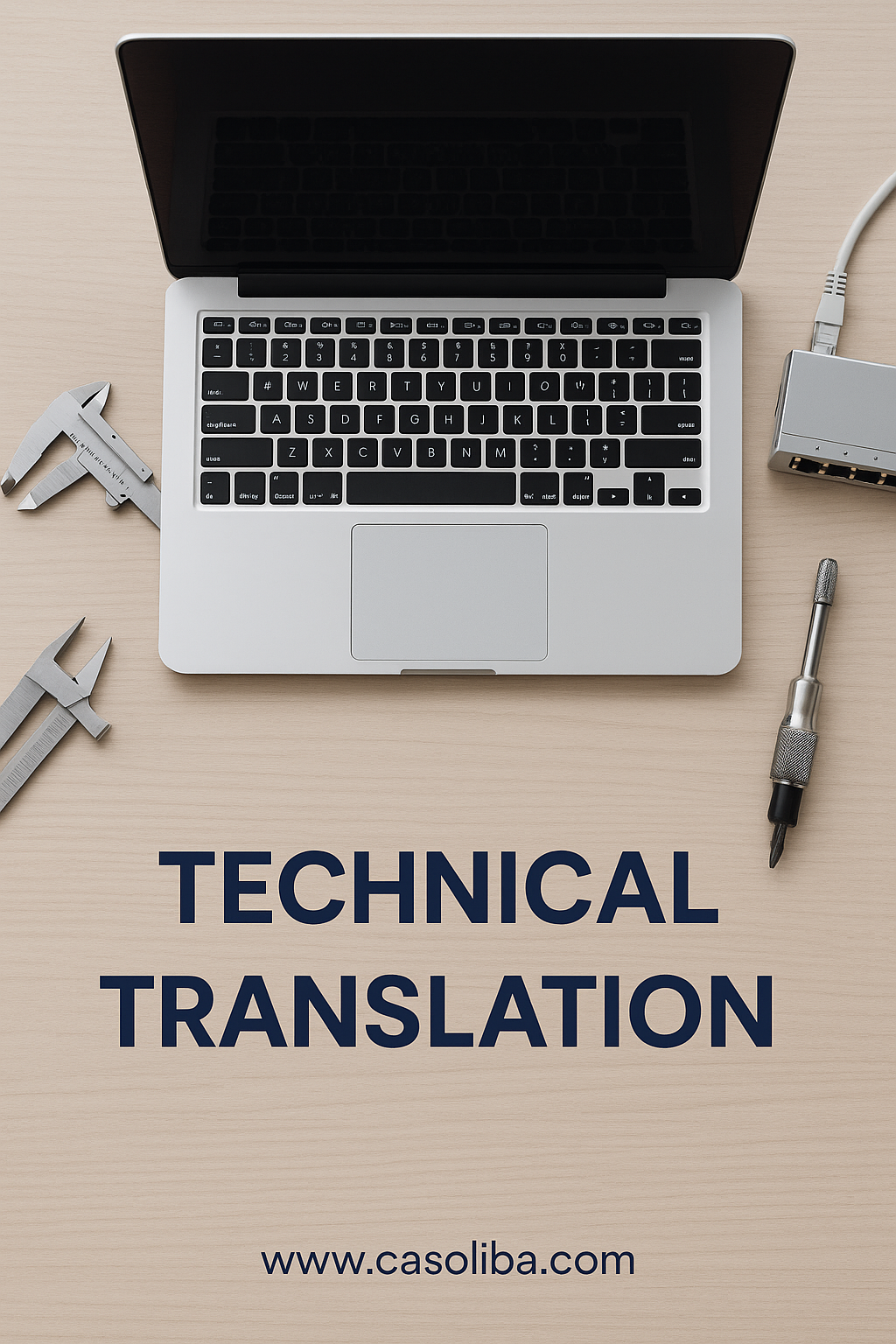The Real Challenges of Technical Translation (And How to Avoid Costly Mistakes)
Why Is Technical Translation So Challenging—and Why You Should Trust a Specialist
Technical translation isn’t just about translating words. It’s about translating precision, clarity, and functionality—and doing it in a way that makes complex information easy to understand in another language.
As a professional translator, I’ve seen firsthand why technical translation often overwhelms even experienced linguists. If you’re looking to translate user manuals, safety instructions, product datasheets, or software documentation, here’s what you need to know—and why working with a qualified specialist makes all the difference.
What Is Technical Translation?
Technical translation refers to the translation of highly specialized documents such as:
-
User manuals
-
Installation guides
-
Maintenance instructions
-
Software and IT documentation
-
Scientific or medical texts
-
Product safety data sheets
These documents are typically written by technical writers or engineers and include industry-specific terminology, structured formatting, and detailed procedures. And while only around 10% of the content might include technical terms, the remaining 90% demands fluent, natural, and crystal-clear language. That balance is exactly what makes technical translation so complex—and so crucial.
What Makes Technical Translation So Difficult?
1. Specialized Terminology
Industries evolve rapidly. New technologies bring new terms, and even the same term can have different meanings depending on the field. A non-specialized translator might translate a term literally, which can lead to confusion or even safety issues. A professional technical translator understands the context and performs the necessary research to ensure absolute accuracy.
2. Cultural and Linguistic Adaptation
A good translation doesn’t just mirror the source—it makes the content feel native to the target reader. This includes adapting date formats, measurement units, symbols, and tone. For example, an instruction manual for Spain will look very different from one intended for Mexico or the U.S. Hispanic market.
3. Formatting and Clarity
Technical documents often follow strict formatting guidelines, including numbered steps, warnings, tables, and flowcharts. A professional translator ensures that structure and meaning are preserved, and that the translation is just as user-friendly as the original.
4. Text Expansion
Languages don’t operate on a one-to-one ratio. A sentence in English might be 30% longer when translated into Spanish. This can impact layouts, designs, or packaging. A skilled translator knows how to manage these differences without compromising clarity or compliance.
Why You Should Work With a Technical Translation Expert
Technical translation requires more than just language skills—it demands subject-matter knowledge, linguistic expertise, and attention to detail. A generalist may get the gist across, but when safety, compliance, or product usability is on the line, “good enough” isn’t enough.
As a certified translator with experience in a wide range of industries—including technology, engineering, healthcare, and e-commerce—I make sure your documents:
-
Use the correct terminology for your sector
-
Read naturally and clearly in the target language
-
Comply with relevant regulations and standards
-
Help your users understand and trust your product
Quality Translation = Fewer Errors, Fewer Risks, Happier Customers
Poorly translated technical content can lead to misunderstandings, product misuse, legal liabilities, or lost sales. A professional translation, on the other hand, helps you build credibility, protect your brand, and expand into new markets with confidence.
🔧 Need a technical document translated with accuracy, clarity, and speed?
Let’s talk. I specialize in English–Spanish technical translations that help your products shine and your customers succeed.

0 Comments Add a Comment?